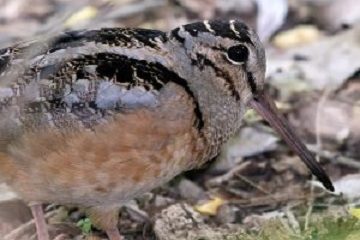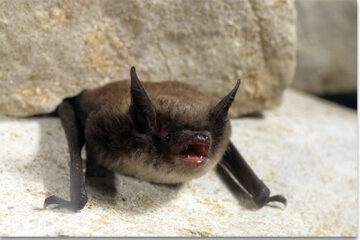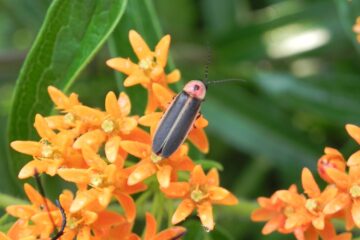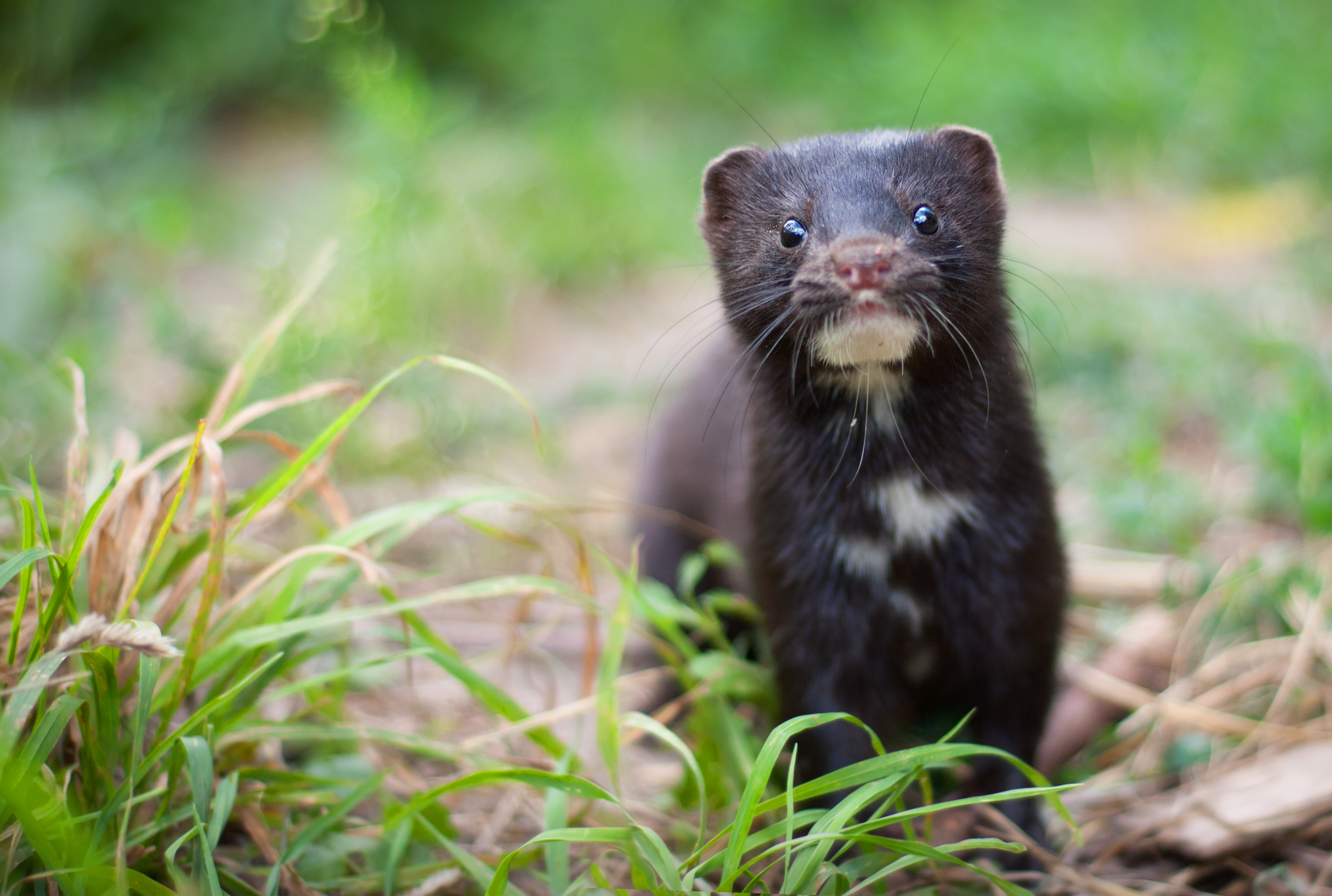 American Mink
American Mink
Neovison Vison
Habitat: The American Mink resides in most of North America, from Alaska and Canada through the United States except for Arizona, along the Arctic coast, and on some offshore islands. It moves easily between land and water, therefore chooses to live in woodsy areas near steams, ponds, or lakes and creates a burrow in the banks. It will also live in brushy cover or rock crevices.
Food: American Mink are carnivores whose diet changes with the seasons. During summer, they eat crayfish and small frogs as well as mammals including rabbits, mice and muskrats. They also eat fish, ducks and other water birds. In the winter, the eat mostly small mammals.
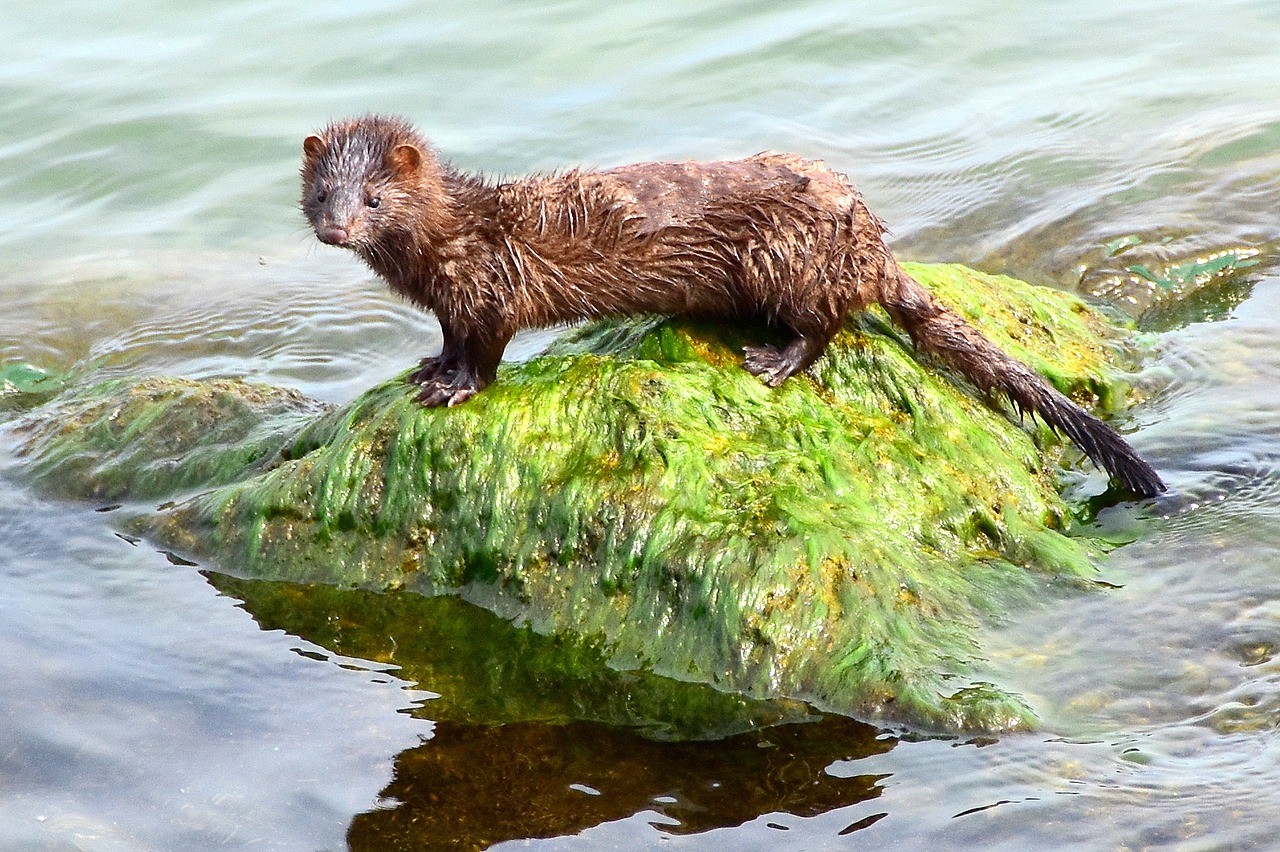 Behavior: The American Mink are mostly solitary animals. They mark their homes using a strong- smelling scent. They are skilled swimmers and climbers. When searching for food they can swim as deep as 100 feet underwater. They burrow in river, pond or lake banks and line the interior of their home with grass and leaves. They communicate by using sounds, visual signs and odors.
Behavior: The American Mink are mostly solitary animals. They mark their homes using a strong- smelling scent. They are skilled swimmers and climbers. When searching for food they can swim as deep as 100 feet underwater. They burrow in river, pond or lake banks and line the interior of their home with grass and leaves. They communicate by using sounds, visual signs and odors.
Life Cycle: The American Mink mate in the winter and have a gestation period that varies between 40 and 75 days. They give birth in April or May. The litters can be as few as one or as many as eight newborns that weigh less than half an ounce. They are weaned at six weeks but stay with their mother until fall so they can learn about staying safe and successfully catching prey.
Conservation: The American Mink population is stable, although habitat loss is a significant threat. They depend on wetland areas that are threatened by improper disposal of chemicals.
Interesting facts:
- The American mink continues to be exploited for its beautiful and soft fur. Most
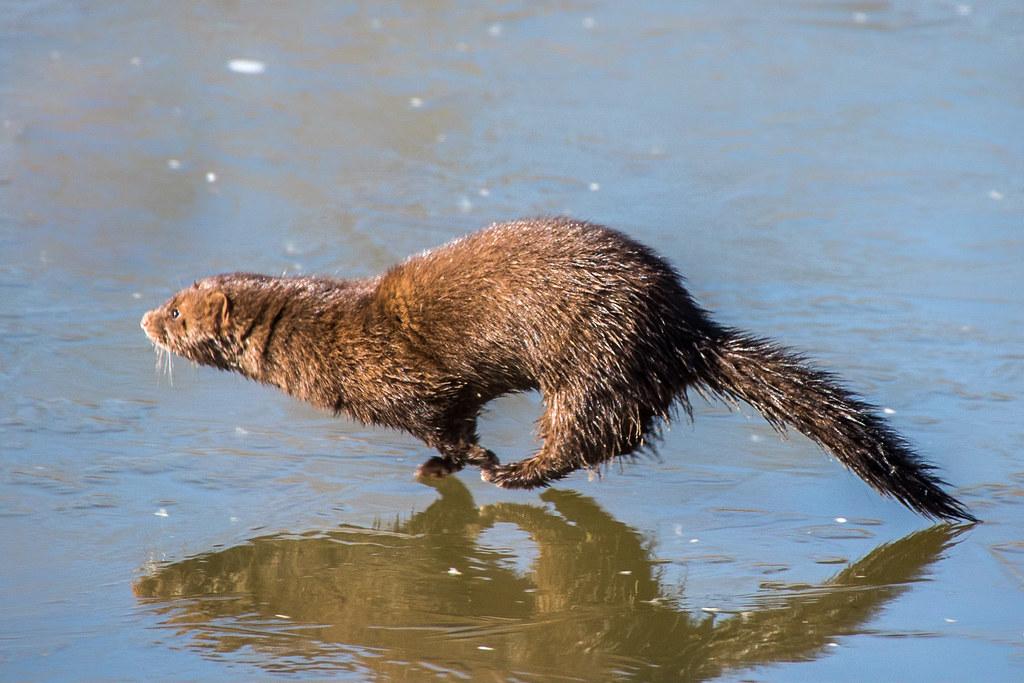 states and all of Canada have trapping seasons. However, there are wildlife sanctuaries that provide a healthy habitat and protect them from recreational and commercial trapping.
states and all of Canada have trapping seasons. However, there are wildlife sanctuaries that provide a healthy habitat and protect them from recreational and commercial trapping. - The American Mink can kill snakes but won’t eat them.
- The American Mink has a life span of about 10 years.
- Adult male bodies grow to 13-18 inches. Their tails are between 6-10 inches
- Adult female bodies grow to 12-15 inches. Their tails are between 6-8 inches.
Sources:
The Humane Society Wildlife Land Trust.
National Agricultural Statistics Service: Mink
Oct. 14, 1999 at http://usda.mannlib.cornell.edu/reports/nassr/other/zmi-bb/mink0799.txt
American Mink on The IUCN Red List site – http://www.iucnredlist.org/details/41661/0
Please share any questions, comments, or photos that you and your child have on the Raritan Headwaters Learning Community Facebook Page!
More Raritan Headwaters Learning Resources

